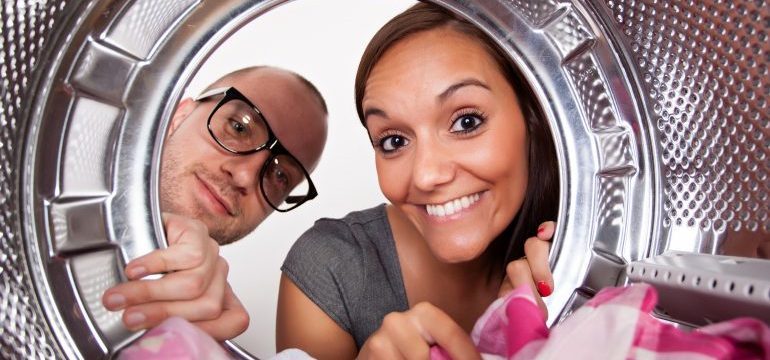Shopping for a clothes dryer has never been more complicated. The choices can be overwhelming. Beyond capacity and color, consumers must decide whether they want any of a myriad of special features such as moisture sensors and steamers. Let’s go shopping and take a look at what’s available.
Size/Capacity. The ideal machine dries your clothes efficiently and effectively, and fits in the allotted space in your home. Dryers range from 3.4 cubic feet (compact) to 9.0 cubic feet (extra-large). An average full-size dryer falls in the 5.8-8.3 cubic-foot range. When shopping, check both the capacity and the outer dimensions of the unit to ensure your selection will fit in your laundry room.
Tip: Many manufacturers use misleading marketing terms to make their dryers sound bigger. Check the numbers. The right dryer capacity is twice that of your washer.
Power. Most dryers are electric, but gas-powered units are available. Electric models are easy to install and use. Gas dryers require a dedicated gas line. If you don’t have one, budget several hundred dollars to have one installed. Gas dryers also cost more than electric dryers to purchase and require professional installation, but they offer energy savings and slightly lower operating costs over time. Most consumers choose electric dryers because of the lower price, ease of installation and use, and safety.
Helpful features. Some of the best features are standard on most new dryers. Moisture sensors and pre-set cycles for different types of laundry improve efficiency and results. Another useful feature is an extended tumble or wrinkle-prevention cycle that will keep your dryer moving if you aren’t able to remove clothes at the end of the cycle. If your home is short on space, look for models that can be stacked with a washer.
Newer features. If you’re not a fan of ironing, dryers with steam cycles seem like a great option. But according to Consumer Reports testing, clothing items still had wrinkles after steam cycles. Don’t discount this feature completely, though. Steam often removes odors. Eco cycles are another feature that didn’t live up to the hype in lab tests. These cycles took much longer and, in some cases, used more total energy than traditional settings. New smart dryers deliver usage data to wireless devices, allow you to control your dryer with your mobile device, and can help you diagnose maintenance problems. While these new models are promising, most users find they aren’t worth the extra cost.
Budget. Modern dryers range in price from $350 to well over $1,500, depending on type, size, power source, and features. Many basic models are available for under $600. Mid-range models tend to offer the moisture sensor, different temperature and dryness settings and presets, and other features that most consumers want. Smart dryers are the most expensive option. You won’t find many models to choose from, and they start at $1,600.


